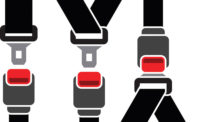I’ve been thinking about the concept of the “introverted,” or “analytical” leader, for a variety of reasons. For one thing, everyday conceptions of leadership revolve around extroverted traits; speak up, take control, direct others, take action, be the energetic, persuasive, even charismatic individual that others “naturally” want to follow.
In the popular Myers-Briggs typology, introverts get labels such as “Life’s Natural Organizer” and “Life’s Independent Thinker”— not especially exciting stuff, to be sure.
You get the picture. If you are “outgoing and sociable”, you have the extroverted wiring of a leader. If you are a detail-oriented analyzer, not so much.
Survey says
But recent surveys of people in top corporate leadership positions, and some older research on personality type and career, paint a different picture. Some of the most common pathways into very top leadership roles, including topmost CEO positions, are through engineering, finance, or operations. An abundance of data suggests these particular professional roles are staffed by disproportionate numbers of analytical, introverted individuals.
Even a cursory read of the iconic “Good to Great” indicates the most effective business leaders, those who have presided over astonishing gains in the performance of their companies, hardly fit an extroverted “classical leader” stereotype.
Instead of being the “big ego” leader with a thousand helpers, in most cases these leaders come across as analytical. They combine the introvert’s tenacity and focus (on the business) with great humility, and a willingness to share leadership (leader of a thousand leaders).
Common myths
How could introverts as leaders inspire others? Aren’t they socially somewhat inept, and more disposed to individual-contributor, even “solitary” work?
One of the common myths about analytical personalities is their behavioral preferences are narrowly defined traits. The missing piece to this assumption is that the traits really are “preferences,” and not immutable limitations.
In interpreting personality profile data with individuals or teams, I have often used this analogy: personality “type” characteristics are like handedness. Most people are firmly right-handed. That is their “preferred” hand. The other one is not limp at their side, but most tasks, certainly the unilateral ones, are done with the right hand.
But what if that is not possible? What if a sprained wrist, a broken finger, or hand surgery renders the preferred hand out of commission? We do not go unfed, teeth unbrushed, hair uncombed, etc. We shift over to the other hand, and unfamiliar as that may be, we get by.
Meet and greet
The preferred behaviors associated with an introvert sometimes don’t fit the situation at hand. Even the most die-hard introvert lives in a social world, and that world often requires quick decisions in the absence of a complete data set. When some “extroverting” is required, most analytical types can do it. It may be tiring (even exhausting), but they can meet and greet, take quick action, and generally get out of their comfort zone — they can go southpaw for awhile, when circumstances require it.
The key is that most successful people, whatever particular personality type (again, a matter of preference) they possess, have developed “work around” behaviors. They have identified, maybe at a purely intuitive level, or maybe through explicit coaching and training, modes of thinking and acting that are outside their natural preference, sometimes even opposite to their natural preference, but which fit the requirements of the business situation. All types have some capacity to be flexible.
I have worked with a couple of highly successful individuals in sales leadership roles who are strong introverts. Sales is a career which attracts extroverts, by the very nature of the work. At the level of the calling sales rep, it would be hard to think of many jobs that were more suited to the “big personality,” socially-oriented extrovert. Sales reps have to meet and greet comfortably, take the initiative in relationship building, remember people’s names (and other important things about them such as family, hobbies, etc.), handle rejection and move on quickly. In my experience the vast majority of sales reps are extroverts.
Adaptive but fatigued
But think about an executive with leadership responsibility in sales. Much of that work requires market analysis, forecasting, coordination with marketing and production, communicating expectations to the sales team, and so on. This is work more suited to the introvert temperament.
Tellingly, my couple of introverted sales leader friends both freely acknowledge that they were challenged early in their careers by the more social/interpersonal parts of the sales rep job. They learned to do it, and to do it well, but to use my handedness analogy, it was very left-handed for them. And as well as they were able to bring it off, it wore them out. A customer golf outing with lots of new faces, and chit-chatting with folks at the “19th hole” — the extrovert’s dream day — drained them.
Extrovert on demand
Having progressed in their careers, the higher level and more strategic role of the VP of Sales drew on their “right-handed” skills of analysis and data-driven decision-making, much of it in a more solitary than social setting — a natural comfort zone. But they can “extrovert” on demand.
The good news for those of us who are more introspective, cautious, detail-oriented, data-driven, and maybe a bit slower to warm up and harder to get to know, is that we are not out of the running for positions of leadership, in safety or in other organizational roles. Indeed, quite the contrary. Being more “ambidextrous” is a real advantage, and one which can be cultivated.
Still water runs deep, as the old saying goes. It also runs into the C-suite. Don’t mistakenly minimize the impact of the analyticals among us; they can lead as well as follow. There are more than a few in top positions in many settings, including the EHS world.



